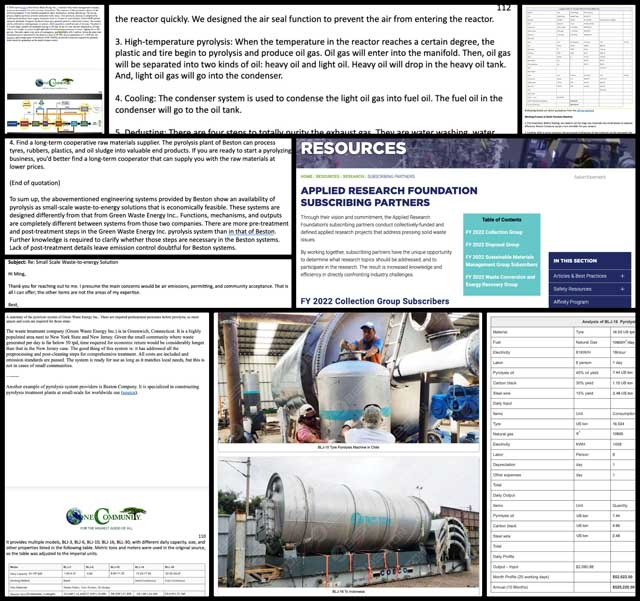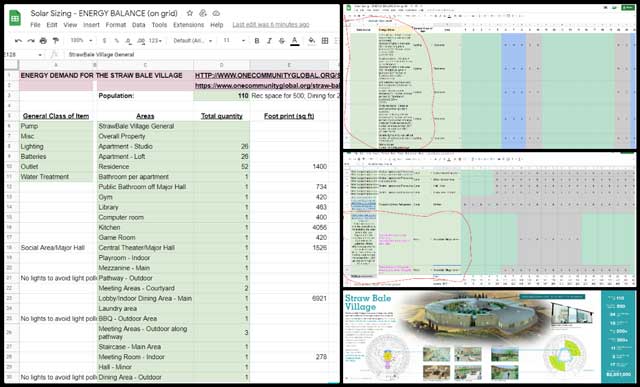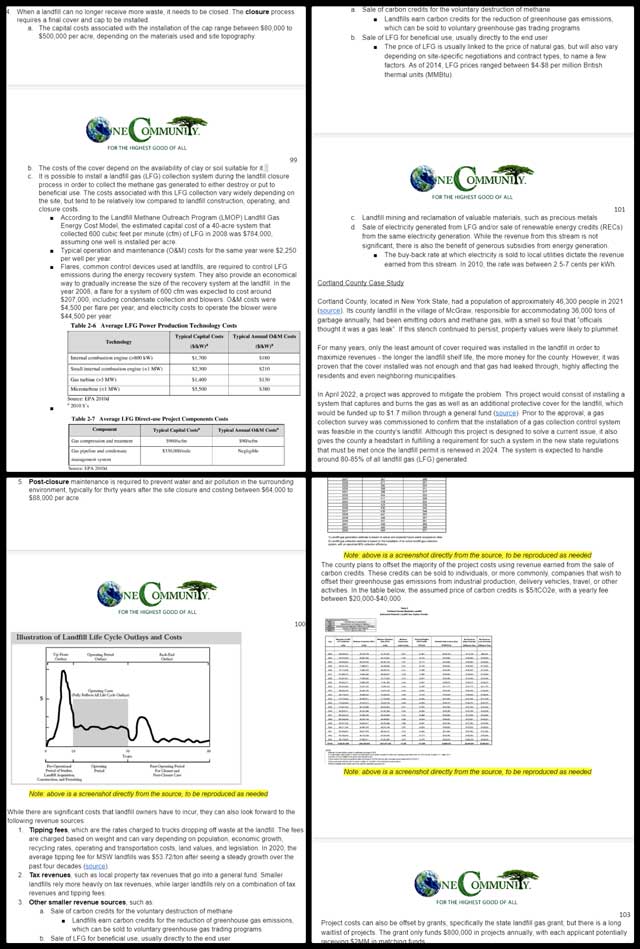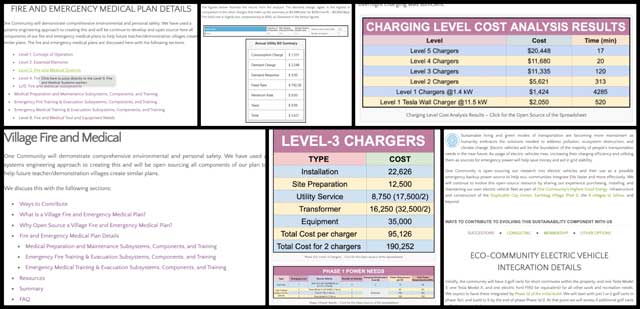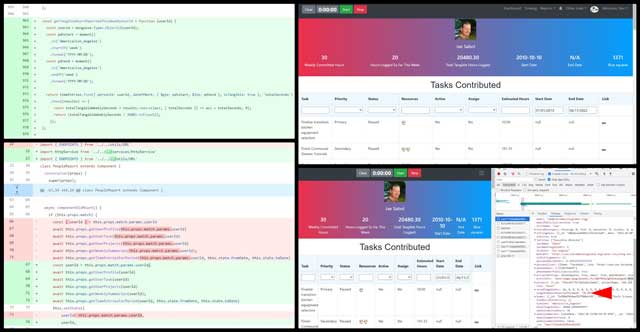Globally Replicable Eco-models – One Community Weekly Progress Update #482
Globally replicable eco-models are needed if we are to transition to a sustainable civilization and planet. One Community is supporting this by open sourcing and free sharing replicable sustainability models for food, energy, housing, education, for-profit and non-profit economic design, social architecture, fulfilled living, global stewardship practices, and more.
- Here’s our project overview
- Here’s our world-change methodology
- Here’s how this becomes self-replicating
- Here’s how we are open source and free-sharing all the do-it-yourself designs

OUR MAIN OPEN SOURCE HUBS
Click on each icon to be taken to the corresponding Highest Good hub page.
One Community’s physical location will forward this movement of creating globally replicable eco-models as the first of many self-replicating teacher/demonstration communities, villages, and cities to be built around the world. This is the June 19th, 2022 edition (#482) of our weekly progress update detailing our team’s development and accomplishments:
Globally Replicable Eco-models
One Community Progress Update #482
DONATE | COLLABORATE | HELP WITH LARGE-SCALE FUNDING
CLICK HERE IF YOU’D LIKE TO RECEIVE AN EMAIL EACH WEEK WHEN WE RELEASE A NEW UPDATE
YOU CAN ALSO JOIN US THROUGH SOCIAL MEDIA
ONE COMMUNITY WEEKLY UPDATE DETAILS
HIGHEST GOOD HOUSING PROGRESS
 One Community is creating globally replicable eco-models through Highest Good housing that is artistic and beautiful, more affordable, more space efficient, lasts longer, DIY buildable, and constructed with healthy and sustainable materials:
One Community is creating globally replicable eco-models through Highest Good housing that is artistic and beautiful, more affordable, more space efficient, lasts longer, DIY buildable, and constructed with healthy and sustainable materials:
- Learn about: Our Upcoming Crowdfunding Campaign
- Learn about the different village models: 7 Sustainable Village Models
- Visit the open source portals for the first two: Earthbag Village OS Hub | Straw Bale Village OS Hub
This week the core team updated the Aircrete compression testing content to match the engineering page template. We also added trials that were missed, like foam test, amount of foam, and foam generators, and added a better picture of the impact of hardness on foam. The same team member had a call with the center hub team about the way forward, and reviewed Yuran’s progress on the Walipini, Aquapini, Zenapini content for the web page supporting globally replicable eco-models.
The core team also started reviewing the latest Murphy bed Assembly Instructions export. We found and posted updates to some measurement numbers for the wall framing section and resolved comments in the previous version of the Murphy Bed Assembly Instructions document supporting globally replicable eco-models. The same team member updated the Transition Kitchen Cost Analysis spreadsheet with in-cell images.
Dean Scholz (Architectural Designer) continued helping with the Earthbag Village (Pod 1) 4-dome cluster designs. This was week #249 of Dean’s work as he is finishing up the actual renders. Made corrections and updated the wall textures of the kitchen and double-bed domes to match those of the central area supporting globally replicable eco-models.
This week Stacey Maillet (Graphic Designer) completed her 76th week working on the final edits and revisions to the Murphy bed instructions. This week Stacey focused on wrapping up the comments from the shared document and re-saving a new PDF MurphyBed 6.8 document. The revisions to the new components and the wall frame assembly were completed. There have been updates made to the layout of the page designs and the component descriptions supporting globally replicable eco-models.
The measurement notations need to still be made more consistent and this will be worked on going forward to make sure the call outs, arrows and colors used for pointing lines are more consistent. Also a recount of screws and components used is needed. Screenshots below are related to this latest progress demonstrating meaningful efforts towards creating globally replicable eco-models.
Daniela Andrea Parada (Civil Engineering Student) completed her 32nd week helping with the Sustainable Roadways, Walkways, and Landscaping tutorial development. This week Daniela started off by reviewing all the newest comments and inputting the research that had been done for the cost of the road maintenance. Various values on the roadway excel sheet were double checked and adjusted based on findings from previous and new sources. She asked for advice concerning the excel sheet and updated her manager on her work so far and also thereby supporting globally replicable eco-models.
Throughout the week Daniela continued to work on the Roadways excel sheet. This included calculating and researching information for the initial costs table. Once all calculations were completed, Daniela added comments for each table in order for the reader to better understand the information provided. As Daniela addressed management’s comments on the excel sheet she ended the week by continuing to write the narrative for the flexible pavement section. Pictures below are related to this work demonstrating meaningful efforts towards creating globally replicable eco-models.
Carlos Lillo (Engineering Technician) also completed his 32nd week helping with the pallet furniture designs for the Duplicable City Center guest rooms. This week Carlos organized all the final files and provided PDF exports for easy review and sharing. Pictures below show this demonstrating meaningful efforts towards creating globally replicable eco-models.
Diwei Zhang (Mechanical Engineer) completed his 13th week of work, now focused on 3D modeling and analysis review for the Net-zero Bathroom component of the Earthbag Village. This week, Diwei researched some ways of stormwater harvesting, such as micro basins, swales, French drains, permeable pavements, curbs, and road gardens. He also studied the municipal non-potable and potable water treatment processes. Stormwater is usually used as non-potable for toilet flushing and irrigation after simple filtration and disinfection. Using the stormwater for potable water in a stormwater harvesting project is rarely found.
To achieve potable water quality, the stormwater usually goes to the municipal wastewater/sewage treatment plant first, then goes to the drinking water treatment plant. The purification ponds for the greywater of the Duplicable City Center and Earthbag Village are a small-scale simplified version of the wastewater treatment plant. Their capacity, however, cannot be quantified and the quality of resulting water needs to be tested to be guaranteed. The rooftop rainwater is good to be used as potable water after treatment.
The faucets in the net-zero bath need to be supplied with potable water. This means we need two independent water supply lines for toilets and faucets using stormwater and rooftop rainwater, separately. The water supply lines of toilets and faucets of the net-zero bathroom are independent as shown in the current 3D modeling. Thus, it is highly feasible to set up two harvesting systems without modifying the current underground plumbing of the bathroom. Diwei then planned the layout of the entire water supply for the net-zero bathroom. Pictures below show some of this work demonstrating meaningful efforts towards creating globally replicable eco-models.
Ming Weng (MS Geography & Environmental Engineering) completed his 12th week helping with the Best Small and Large-scale Community Options for Sustainable Processing and Reuse of Non-recyclables research, report, and tutorial. This week, Ming did 30 hours of work, typically working on three things: 1) reaching out to professors to get advice and strategies in looking for small-scale waste to energy solutions 2) reviewing sources that professors recommended and reaching out to other faculties that may be more specialized in such areas (though no replies) 3) finding and reviewing two case studies for pyrolysis, one in NJ, and one in China.
Comparisons and evaluations were made for those two systems, and it was concluded that pyrolysis as a small-scale waste-to-energy solution is possible and economically feasible, as shown in the summary table by the company. Pictures below show some of this work-in-progress demonstrating meaningful efforts towards creating globally replicable eco-models.
Lam (Dave) T. Nguyen (Mechanical Engineer) completed his 9th week of work. This week, Dave started double checking energy demand data for the Straw Bale Village (Pod 2). After a careful review, there are a few things he needs to find more sources to validate the data. For example, some data sources are out of date and some are not available. Pictures below are related to this work demonstrating meaningful efforts towards creating globally replicable eco-models.
Kivia Sugiarto (Sustainability Research Manager) completed her 4th week helping manage and complete the Best Small and Large-scale Community Options for Sustainable Processing and Reuse of Non-recyclables research, report, and tutorial. This week, Kivia finished up her writing on the cost and potential revenues of landfilling, mainly using a resource from the Environmental Protection Agency. She then wrote a case study on the installation of a landfill gas collection and burning system in Cortland county, New York, highlighting the potential revenues from carbon credits. See below for some pictures related to this demonstrating meaningful efforts towards creating globally replicable eco-models.
DUPLICABLE CITY CENTER PROGRESS
 One Community is creating globally replicable eco-models through a Duplicable and Sustainable City Center that is LEED Platinum certified/Sustainable, can feed 200 people at a time, provide laundry for over 300 people, is beautiful, spacious, and saves resources, money, and space:
One Community is creating globally replicable eco-models through a Duplicable and Sustainable City Center that is LEED Platinum certified/Sustainable, can feed 200 people at a time, provide laundry for over 300 people, is beautiful, spacious, and saves resources, money, and space:
- Learn about this building and it’s function: Duplicable City Center Open Source Hub
This week Luis Manuel Dominguez (Research Engineer) completed his 49th week helping with research related to the City Center Eco-spa designs. After a few weeks away, Luis focused on picking up where he left off. He had just wrapped up developments in the City Center Spa design website and did some quality checks on his progress. While all information was accurate and up to date, Luis found that the formatting needed some updating and standardization in order to be presentable.
This also included checking links to ensure they were working, specifically the Resource section of the document. Next week Luis will continue his progress on the website report and be ready for publishing soon. Pictures below are related to this work demonstrating meaningful efforts towards creating globally replicable eco-models.
This week Venus Abdollahi (Architectural Designer) completed her 38th week helping finish the Duplicable City Center designs. This week Venus worked on elevations. She updated the South elevation according to the SketchUp Model and changed the position of vehicle entry and some columns on some plans in order to match the new plans. Venus also corrected sections C-C and C’C’ according to her supervisor’s feedback. See pictures below demonstrating meaningful efforts towards creating globally replicable eco-models.
Huiya Yang (Volunteer Architectural Designer) completed her 35th week working on the Duplicable City Center architectural review and updates related to the structural code. This week Huiya finished modeling Door 3 and Door 4 according to the door size detail in the latest CAD drawing and updated them in the SketchUp model. When she updated Door 3 at the entrance for the Dining dome, she noticed that the door was too high for the entrance vestibule and coordinated with Yuxi to find the same type of door but with a shorter height. Pictures of some of this work are below demonstrating meaningful efforts towards creating globally replicable eco-models.
Yuxi Lu (Architectural Designer) completed her 33rd week working on the Duplicable City Center architectural review and updates related to the structural code. This week Yuxi met with the team to discuss the potential need of shifting columns to avoid embedding columns in triangular walls as it would complicate construction. The decision was made to keep the columns where they are as the building pieces will not be pre-fabricated. The team also went over structural items that needed clarification.
To accommodate the adjacent main entry door with smaller clearance width, there was an addition of window type W7 (which is W4 but shorter in width). Wall and column interaction was revisited in SketchUp too, to ensure correct column location fit with the curvature of the dome. Pictures of some of this work are below demonstrating meaningful efforts towards creating globally replicable eco-models.
Yuran Qin (Volunteer Web Editor) completed her 30th week helping with web design. This week Yuran fixed the existing problems and made new tables for the Eco-community Electric Vehicle Integration and Charging Infrastructure Guide page. She also uploaded click-to-enlarge versions of images for the Aquapini & Walipini page and created a Table of Contents at the top and in the details section for the Village Fire and Medical page demonstrating meaningful efforts towards creating globally replicable eco-models.
Raj Patel (Mechanical Engineer) completed his 24th week helping. with the Duplicable City Center hub connectors design and testing. This week Raj worked on creating the manufacturing drawings shared with the manufacturers. He also helped get quotes from the manufacturers and added a “Next Needed Steps” section to the document. This section has plans of what needs to be done next in terms of load calculations and cost analysis. Pictures below are related to this work demonstrating meaningful efforts towards creating globally replicable eco-models.
Prathik Jain (Mechanical Engineer) completed his 19th week of work volunteering. This week Prathik researched how to perform a hand calculation for the load acting on the struts and the center hub in the dome. This has been to perform a thorough analysis to assure the center hub solution the team has decided to move forward with is safe and reliable for any higher load factor than the one considered. He also followed up with the fabricators with a few follow-up questions to know what different materials can be used for the brackets and their manufacturing costs. Pictures below show some of this work-in-progress demonstrating meaningful efforts towards creating globally replicable eco-models.

Kamil Gajownik (Industrial/Product Designer) completed his 7th week of work on the Duplicable City Center dormer window designs and assembly instructions. This week Kamil had more conversations with a carpenter who led Kamil to make structural changes ensuring the design could be made easily and aesthetically. He also began preparing files for the assembly instructions as the design itself is coming to completion. Over the next few weeks he will break down each component into parts and create a simple explanation for how the design can be made. Pictures below are related to this work demonstrating meaningful efforts towards creating globally replicable eco-models.
Yujue Wang (Architectural Designer) completed her 5th week working on the interior design for the Duplicable City Center rental rooms. This week, Yujue continued the development of the Duplicable City Center Interior Design by updating the window and curtains, designing wood tables, and rendering the bathroom. She also continued to work on cost analysis for the bathroom. In terms of room design, Yujue updated the window model in SketchUp and redesigned the curtains. She also redesigned tables in the room to ensure they were made of wood and could be made on our own. See below for pictures related to this work demonstrating meaningful efforts towards creating globally replicable eco-models.
Jessica Santos (Architect) completed her 2nd week working on the interior design for the Duplicable City Center rental rooms. For her second week, Jessica worked on updating the room decoration with pallet furniture we already had designed. She added the bed, wardrobe, table and chairs. For the bed-wall she added a design for a painting illustrating an abstract sunset on the beach. He also continued to work on the 3D model, aligning the items picked with what is available in the market. She also started to work on the Interior Design Cost Analysis. See below for some pictures of this work demonstrating meaningful efforts towards creating globally replicable eco-models.
Gabriela Vilela S. C. Diniz (Architect and Urban Planner) also completed her 2nd week working on the interior design for the Duplicable City Center rental rooms. This week, Gabriela started working at her ‘City Center Interior Design Cost Analysis’, adding some items for the “Fairy Garden Room”. She also made a few lighting tests for the “fairy dust” effect and a few changes based on management feedback like working more on the silk plants on the walls, removing the wallpaper, and exchanging the swing for a hammock chair. Gabriela still needs to think more about the wall finishes and work on the bathroom design. Pictures below are related to this work demonstrating meaningful efforts towards creating globally replicable eco-models.
HIGHEST GOOD FOOD PROGRESS
 One Community is creating globally replicable eco-models through Highest Good food that is more diverse, more nutritious, locally grown and sustainable, and part of our open source botanical garden model to support and share bio-diversity:
One Community is creating globally replicable eco-models through Highest Good food that is more diverse, more nutritious, locally grown and sustainable, and part of our open source botanical garden model to support and share bio-diversity:
- Learn about the structures: Hoop House Hub | Aquapini & Walipini Open Source Hub
- See what we’ll be growing: Gardens & Hoop Houses | Large-scale Structures | Food Forest | TA
This week the core team completed a detailed review of the latest 3-day menu blocks for the Transition Food Self-sufficiency Plan.
We also added and trained another manager how to review these Master Recipe and 3-Day Menu Blocks. That same manager additionally continued reviewing and editing the Chicken Doc starting with comments on page 142, focused on comments on poop trays and roosting bar spans, necessity of 2 handles on chick poop trays, and location of handle attachment to 2×2 and/or 3/4″ plywood.
And the core team created and updated the Transition Kitchen images, cost analysis and other details on the live page.
Marilyn Nzegwu (Chef and Culinary Consultant) completed her 10th week helping with the completion of the Transition Food Self-sufficiency Plan and related menu and meal plans. This week Marilyn started by searching for simplified vegan and omnivore protein options respectively, to create alternative simple proteins for each recipe. After a proper review of recipes, she was asked to add each recipe summary to the menu overview for them to be reviewed for suggestions and corrections. Marilyn made the corrections as per meal suggestion and grammatical reviews on all FRESH WEEK created menus. The pictures below relate to this work demonstrating meaningful efforts towards creating globally replicable eco-models.
HIGHEST GOOD EDUCATION PROGRESS
 One Community is creating globally replicable eco-models through Highest Good education that is for all ages, applicable in any environment, adaptable to individual needs, far exceeds traditional education standards, and more fun for both the teachers and the students. This component of One Community is about 95% complete with only the Open Source School Licensing and Ultimate Classroom construction and assembly details remaining to be finished.
One Community is creating globally replicable eco-models through Highest Good education that is for all ages, applicable in any environment, adaptable to individual needs, far exceeds traditional education standards, and more fun for both the teachers and the students. This component of One Community is about 95% complete with only the Open Source School Licensing and Ultimate Classroom construction and assembly details remaining to be finished.
With over 8 years of work invested in the process, the sections below are all complete until we move onto the property and continue the development and open sourcing process with teachers and students – a development process that is built directly into the structure of the education program and everything else we’re creating too:
- Program Overview: Education Open Source Hub
- How the components work together: How to use the Education for Life Program
- Lesson Plans for Life – Lesson Plans How-to
- Foundations of Outstanding Leaders, Teachers, and Communicators
- Curriculum for Life
- Teaching Strategies for Life
- Learning Tools and Toys for Life
- Evaluation and Evolution
This week, Adolph Karubanga (Certified Project Manager & Civil/Structural Engineer) completed his 13th week helping with the Ultimate Classroom structural engineering. This week Adolph reviewed, compiled and adjusted the AutoCad drawings while incorporating the calculated design needs. Pictures below are related to this work demonstrating meaningful efforts towards creating globally replicable eco-models.
HIGHEST GOOD SOCIETY PROGRESS
 One Community is creating globally replicable eco-models through a Highest Good society approach to living that is founded on fulfilled living, the study of meeting human needs, Community, and making a difference in the world:
One Community is creating globally replicable eco-models through a Highest Good society approach to living that is founded on fulfilled living, the study of meeting human needs, Community, and making a difference in the world:
- Read the Highest Good society overview: Highest Good Society
- Learn about the model for fulfilled living and sharing: A Day in the Life
- Learn about the 4 economic models: RBE | For-profit | Non-profit | Entrepreneurship
- Learn about our open source community collaboration and management software: The Highest Good Network
This week the core team completed 30 hours managing One Community volunteer-work review not included above, emails, social media accounts, web development, new bug identification and bug fix integration for the Highest Good Network software, and interviewing and getting set up new volunteer team members. Pictures below show some of this demonstrating meaningful efforts towards creating globally replicable eco-models.
The core team also renewed our trademarks for Highest Good Food® and Highest Good Energy®.
Phu Nguyen (Software Developer) completed his 12th week helping with the Highest Good Network software. This week, Phu continued working on the Tangible Hours Bug. Phu was able to add permission for an Admin/Owner to edit hours and limit permissions for all other users to edit hours. Phu also review PR 441-three icon clocks, 442-scrollbar and display, 443-non editable admin/user, 160-backend for three icon clocks, and 446-hour logged so far this week. The pictures below relate to this work demonstrating meaningful efforts towards creating globally replicable eco-models.
Yiyun Tan (Software Engineer) completed her 11th week helping with the Highest Good Network software. This week Yiyun implemented two features for the management dashboard. The first one is giving different user roles the correct view. More specifically, volunteers/core team can see other volunteer/core team people in the same team as them but manager/mentors are invisible. The second one is implementing the black/green/red three clock icons, making sure green one is the total completed hours of all tasks assigned to one person, red one is the total remaining hours. Both of the two features PRs were raised. Pictures of some of this work are below demonstrating meaningful efforts towards creating globally replicable eco-models.
Ron Magpantay (Software Engineer) completed his 10th week helping with the Highest Good Network software. This week Ron continued his work on front end changes to the HGN application. He is currently working on resolving an issue with user profile badges and an issue related to the irregular display of these badges. With the help of other volunteers and troubleshooting he has identified a potential fix and is working to implement this fix. See pictures below for some of this work demonstrating meaningful efforts towards creating globally replicable eco-models.
Steven (Shaoyu) Wang (Software Engineer) completed his 7th and final week helping with the Highest Good Network software. This week, Steven focused on renovating some parts of the user profile page. He raised two PRs. One added the scroll bar to the blue square section and reorganized the order of the blue squares. The other one fixed the editability of tangible hours to non-admin and non-owner users. He also helped review a PR relative to the display of tangible hours and their categories. See pictures below for some of this work demonstrating meaningful efforts towards creating globally replicable eco-models.
Eiki Kan (Software Engineer) completed his 6th week helping with the Highest Good Network software. In terms of management work, Eiki reviewed weekly summaries. In terms of software development, he continued to work on the task notification feature. He pair programmed with Vera to plan, discuss, and implement the feature. On the backend, he implemented the task notification table and added aggregation for task notifications to the getTeamMemberTasks REST API endpoint.
Also, Eiki wrote a REST API endpoint for creating/updating task notifications, and then illustrated, researched, and successfully implemented the logic for what should happen (create/update) to task notifications when a task is created or edited. On the frontend, he wrote code to call the backend API when a task is created, and successfully displayed a red bell after a task was created. See pictures below for some of this work demonstrating meaningful efforts towards creating globally replicable eco-models.
Jorge Ivan Rodriguez (Software Engineer) completed his 5th week helping with the Highest Good Network software. This week he worked on the “pauseAt cons” and the authentication package jwt-decote. Once we get “const pauseAt” we can work on the function “pauseTimer” to pause the timer component in all scenarios it’s needed. See pictures below for some of this work demonstrating meaningful efforts towards creating globally replicable eco-models.
Yongtae “Yogi” Park (Graphic Designer, UX Designer) completed his 4th week helping create the social media images for these weekly progress update blogs. This week Yongtae created 10 new images and made adjustments to the past three images based on manager feedback. He corrected some typos in some of the text and reworked one asset with an entirely new image. The images for the new assets were brought from Unsplash, Pixabay and Master Graphics. Below you can see the images he created demonstrating meaningful efforts towards creating globally replicable eco-models.

Vera Timokhina (Software Engineer) completed her 3rd week helping with the Highest Good Network software. This week Vera worked on displaying weekly tangible time logged so far on a person’s report page. She managed to collect the data about weekly tangible time by the user on the backend and pass this data to the frontend. Vera started to refactor the people report component. She also worked with Eiki on the tasks notifications. They configured the controller so that it now returns the information about notifications and they decided how they will save and update the information about these notifications. See pictures below for some of this work demonstrating meaningful efforts towards creating globally replicable eco-models.
Jason Kim (Software Engineer) completed his 2nd week helping with the Highest Good Network software. This week Jason was mostly bogged down with Git. It wouldn’t sync with changes in the dev branch for some reason. He had to play around with it and eventually got it working, for now. Then Jason was able to review and approve a few PR’s related to the management dashboard from Yiyun, and also continued to work on the progress bar implementation. The component is still a work in progress. See pictures below for some of this work demonstrating meaningful efforts towards creating globally replicable eco-models.
AND WE PRODUCED THIS WEEKLY UPDATES BLOG – CLICK HERE TO SUBSCRIBE
FOLLOW ONE COMMUNITY’S PROGRESS (click icons for our pages)
INVESTOR PAGES
GET INVOLVED
DONATE | WAYS ANYONE CAN HELP | MEMBERSHIP
CLICK HERE FOR ALL PAST UPDATES
 One Community
One Community









